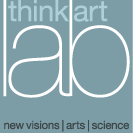Elements of Diamond Set Theory
Some more parts of the mosaic towards semiotics, logic, arithmetic and category theory
Abstract
Further elements are sketched towards an interplay of polycontextural logic, semiotics, arithmetic and set theory. Basics for junctional and transjunctional quantification in polycontextural logic are presented. Hints to metamorphic changes between sets, classes and conglomerates in pluri-verses are given.
1. Diamond set theory

2. Quantification in polycontextural logics

3. Interplay of semiotics, logics, set theory and arithmetic
A study of polycontextural semiotics, focused on semiotics alone, is not yet guaranteeing its polycontexturality.
The logical, arithmetical and set theoretical status of semiotics, mono- and polycontextural, remains undetermined if its corresponding logics, arithmetic and set theory (incl. category theory) are not determined and explicitly developed as polycontextural systems.
On the other hand, what value would have a semiotic system without any chances to proof statements, studying its arithmetical, set and category theoretical properties?
Until now, arithmetic, e.g., in semiotics, is not recognizing semiotical complexity but is calculating some combinatorial properties which are independent of the genuine, say triadic-trichotomous structure.
Similar mismatches happens with well known inadequate combinatorial studies of morpho- and kenogrammatics.
The same situation has to be recognized for other formal systems. A formalization of polycontextural logic is easily reduced to monocontexturality by arithmetization (Gödelization) if there is not at the same time a polycontextural arithmetic at hand to defend the strategies of polycontextural logic.
And obviously, because there is no initial origin, the carousel has to go through all stations of logic, arithmetic, semiotic, category and set theory, thematization, meta- and proto-language, etc. to deliver and interplaying foundation for each other.
Proto- and meta-languagues of formal systems, as normed natural languages, are important to rule the relation between natural and formal languages, especially in the case of the interpretation of formal terms for philosophical or applicative aims.
If proto-language-based considerations are limiting the formal possibilities of formal constructions, the reasons for the restrictive decision should be made as explicit as possible. Also should the formal possibilities be accepted even if they haven’t yet found an interpretation.
Earlier on, there was a big philosophical topic to fight against the advent of traditional many-valued logic with the argument that the natural meta-language used to motivate and to develop many-valuedness is a priori two-valued. Hence, there is no escape from the two-valuedness of human thinking with the help of many-valued logic. Today, not even the question is recognized.
FULL TEXT
http://www.thinkartlab.com/pkl/lola/Elements/Elements.html
Abstract
Further elements are sketched towards an interplay of polycontextural logic, semiotics, arithmetic and set theory. Basics for junctional and transjunctional quantification in polycontextural logic are presented. Hints to metamorphic changes between sets, classes and conglomerates in pluri-verses are given.
1. Diamond set theory

2. Quantification in polycontextural logics

3. Interplay of semiotics, logics, set theory and arithmetic
A study of polycontextural semiotics, focused on semiotics alone, is not yet guaranteeing its polycontexturality.
The logical, arithmetical and set theoretical status of semiotics, mono- and polycontextural, remains undetermined if its corresponding logics, arithmetic and set theory (incl. category theory) are not determined and explicitly developed as polycontextural systems.
On the other hand, what value would have a semiotic system without any chances to proof statements, studying its arithmetical, set and category theoretical properties?
Until now, arithmetic, e.g., in semiotics, is not recognizing semiotical complexity but is calculating some combinatorial properties which are independent of the genuine, say triadic-trichotomous structure.
Similar mismatches happens with well known inadequate combinatorial studies of morpho- and kenogrammatics.
The same situation has to be recognized for other formal systems. A formalization of polycontextural logic is easily reduced to monocontexturality by arithmetization (Gödelization) if there is not at the same time a polycontextural arithmetic at hand to defend the strategies of polycontextural logic.
And obviously, because there is no initial origin, the carousel has to go through all stations of logic, arithmetic, semiotic, category and set theory, thematization, meta- and proto-language, etc. to deliver and interplaying foundation for each other.
Proto- and meta-languagues of formal systems, as normed natural languages, are important to rule the relation between natural and formal languages, especially in the case of the interpretation of formal terms for philosophical or applicative aims.
If proto-language-based considerations are limiting the formal possibilities of formal constructions, the reasons for the restrictive decision should be made as explicit as possible. Also should the formal possibilities be accepted even if they haven’t yet found an interpretation.
Earlier on, there was a big philosophical topic to fight against the advent of traditional many-valued logic with the argument that the natural meta-language used to motivate and to develop many-valuedness is a priori two-valued. Hence, there is no escape from the two-valuedness of human thinking with the help of many-valued logic. Today, not even the question is recognized.
FULL TEXT
http://www.thinkartlab.com/pkl/lola/Elements/Elements.html


0 Comments:
Post a Comment
Subscribe to Post Comments [Atom]
<< Home